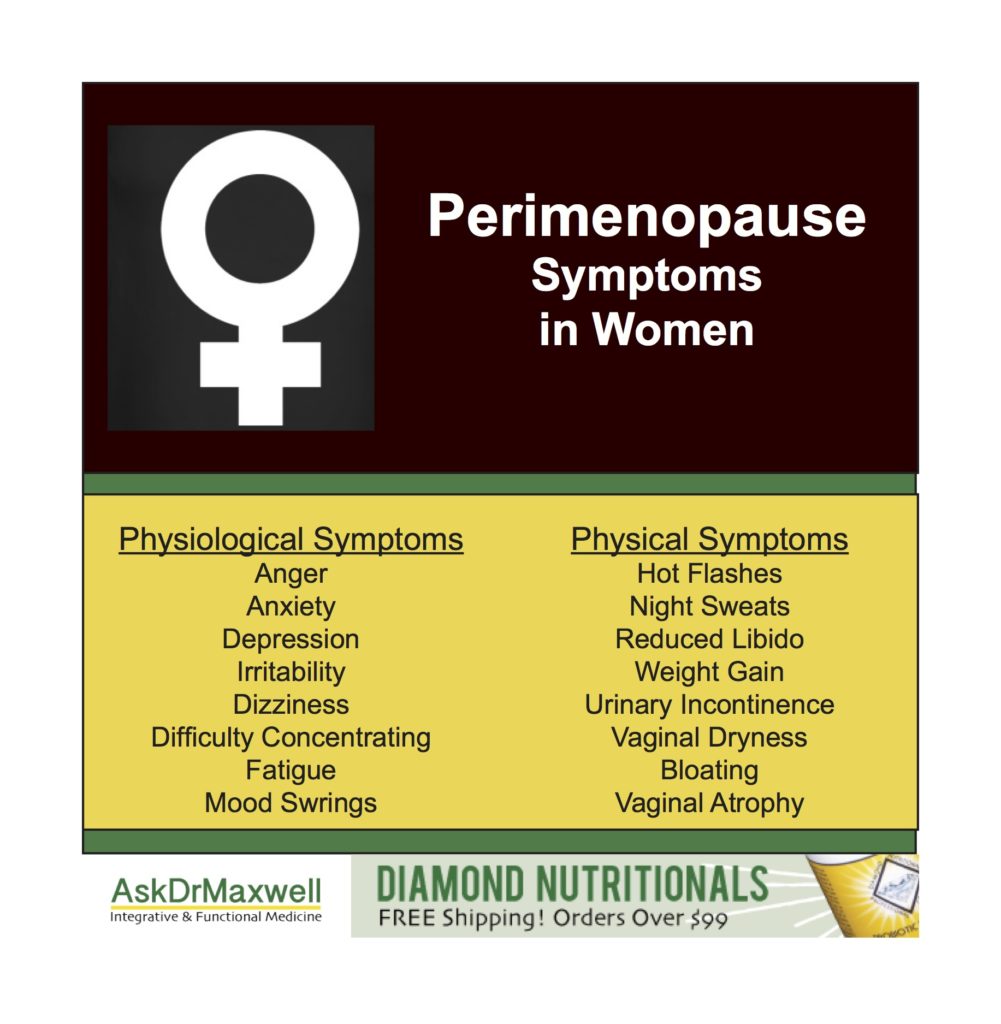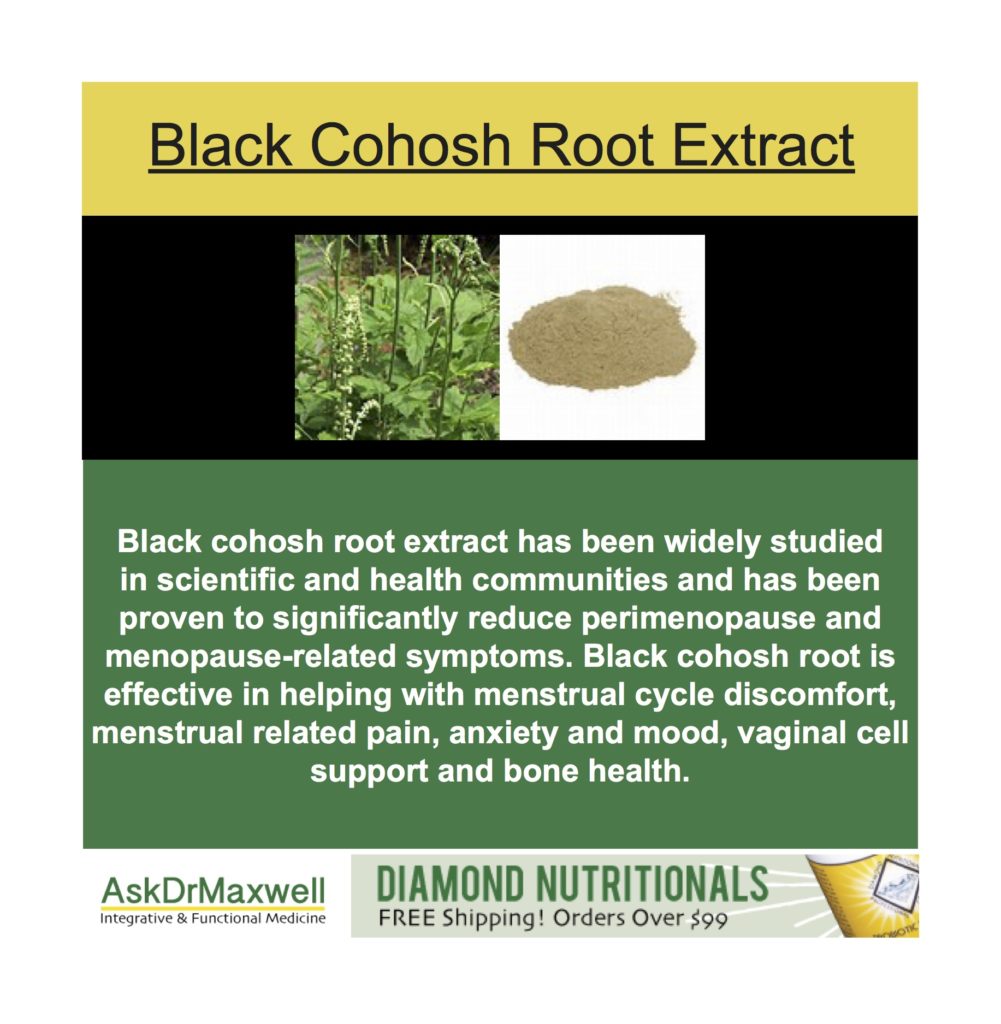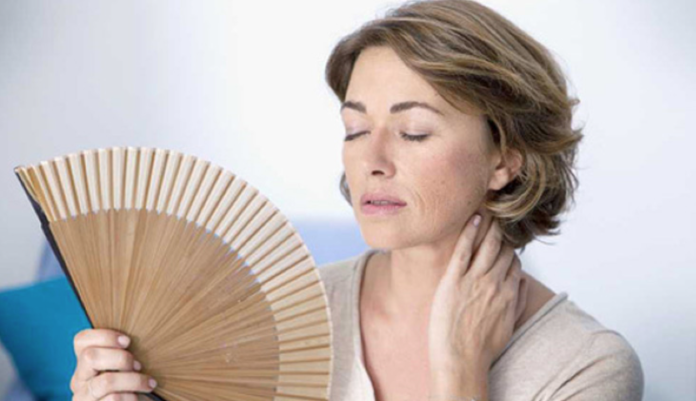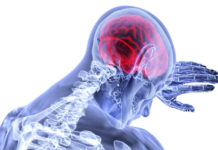Changes in your menstrual cycle, hot flashes, insomnia, low sex-drive, irritability and depression, an increase in PMS symptoms; these are all tell tale signs of menopause. But what if you are still ovulating and getting your period, albeit on a shorter or longer cycle, and you are only in your late thirties or early forties? I have many patients who come to me suffering from the hallmark symptoms of menopause, even though their bodies have not stopped ovulating or menstruating. This is because they are in a stage of hormonal change called perimenopause, which is a part of a woman’s biological shift into menopause. In this article, I am sharing with you enlightening information about perimenopause, and the relevant treatments such as menopause support supplements and bio-identical hormone replacement therapies that have brought my patients great relief from perimenopause symptoms.
What is Perimenopause?
Perimenopause (Peri – Greek for “around or “near” + menopause) refers to the period of time before menopause begins (menopause is determined as having begun when you have not had a period for one full year). During perimenopause the number and quality of follicles – fluid filled sacs in ovaries that contain eggs- diminishes, which causes a decline in estrogen production and fewer ovulations. As a result, estrogen levels may drop or spike in response to these changes and periods may become irregular or heavier. Progesterone levels also fluctuate, sometimes going up but, more often than not, dropping lower.
As estrogen and progesterone levels fluctuate unpredictably, a woman’s brain and body is affected in profound ways and for many women this means the beginning of significant hormone related symptoms. Perimenopause can last anywhere from a few months to a decade and it usually presents itself in women of normal health in the early to mid-forties’s. For women with medical issues or previous gynecological surgeries, perimenopause can begin much earlier. For some women perimenopause can come on quickly and last only 3-4 months, for other women it can come on slowly and last many years, even up to a decade. Some women experience very few symptoms with perimenopause, while others experience a host of uncomfortable symptoms. Leading researchers in female health and wellness have noted that the fluctuations in estrogen and progesterone in a woman’s brain during the perimenopause years is often so intense that it is during this period of life that women usually experience the most changes in their behaviors and bodies.
Identifying the Symptoms of Perimenopause
In my years of practice, I have noticed that the degree to which a woman struggles with perimenopause has a lot to do with several factors including her medical history, genetic makeup, diet, activity level, stress level, and lifestyle habits. Not all of these facets of life can be managed or controlled. While I encourage my patients to eat well, stay active and reduce their stress levels as a means to significantly reduce their perimenopause symptoms, previous medical interventions or family genetics cannot be changed and they play a big role in hormonal balance and health and whether one suffers with perimenopause symptoms or not.
The good news is that it doesn’t matter where you are in your perimenopause/menopause journey or how intense your symptoms are at this point in time. If you make diet and fitness changes now, and use the right supplements and hormone therapies, you can have freedom from the hormonal symptoms affecting your life. Below is a common list of perimenopause symptoms. Please take the time to read it through to see whether you may be struggling with perimenopause symptoms.
- Menstrual changes such as irregular periods, shortened cycles, lengthened cycles, heavier bleeding, lighter bleeding.
- Hot flashes or flushing caused by hormonal changes that affect the hypothalamus.
- Night sweats that are a result of hot flashes and can disrupt sleep cycles.
- Insomnia experienced as having trouble falling asleep or staying asleep.
- Gradual weight gain (especially in the abdomen) as a result of hormonal changes causing the metabolism to slow down.
- Lowered sex drive as a decrease in estrogen causes blood flow to the genital area to be reduced
- Changes in gynecological body parts as the labia and clitoris shrink in size and potentially become less sensitive.
- Vaginal dryness as natural lubrication dwindles due to hormone changes
- Vaginal atrophy as the vagina shortens and loses elasticity
- Urinary urgency as a result of changes in gynecological body parts
- A higher susceptibility to urinary tract infections caused by vaginal fluid loss
- Thinning hair and hair loss
- Drier skin and hair and more signs of aging such as wrinkles and dark spots
- Changes in breast tissue (breasts can become smaller, less dense, have more fatty tissue, develop cysts)
- Breast pain
- Painful joints and muscles due to hormonal fluctuations
- Tiredness and exhaustion due to fluctuating hormone levels
- Mood swings and mood disorders such as anxiety or depression
- More intense experiences of PMS
- Heart palpitations caused by changes to the blood vessels, heart and autonomic nervous system that occur during perimenopause
- Migraines and frequent headaches due to reduced blood flow, lack of sleep, and anxiety.
- Poor concentration and memory
- Intense reactions to stress as estrogen and testosterone levels fluctuate
- The onset of cardiovascular diseases and osteoporosis

How to Treat Perimenopause Symptoms Healthfully & Successfully
Time and again in my practice, my patients come in suffering from all kinds of perimenopause symptoms that are seriously affecting their personal and professional lives. Together, we work on a prescriptive plan that includes lifestyle and diet changes, blood and hormone testing, menopause support supplements, and bio-identical hormone replacement therapy.
My Thorough Testing for Hormone Imbalances
It is important to do thorough, comprehensive and consistent blood and hormone testing so you can rule out other conditions that mimic, or co-exist with, hormonal imbalance. I have found the following tests incredibly accurate and helpful in diagnosing my patients with hormone imbalances or other issues going on in their bodies. I would like to offer these tests to you. They are easily ordered through our website and the results are securely and conveniently accessible to you on-line. We can also forward the results to the physician of your choice.
First, I recommend that all of my female patients struggling with symptoms that appear to be hormone related complete the Comprehensive Female Hormone Panel. This test helps me determine the overall health of my female patients, giving me a picture of their complete blood count, thyroid levels, cholesterol levels, liver function, kidney function, fluids and electrolytes, and if they are at risk or have developed diabetes. Sometimes hormone imbalances can affect various functions in the body such as thyroid function, other times diseases like diabetes can mimic hormone related disorders.
The second test that all of my female patients struggling with hormone imbalance take is the comprehensive and accurate, HPA Stress Profile +5 w/SIgA-BioHealth Kit. Using the patient’s saliva, this test accurately determines hormone these hormones: estradiol, estriol, testosterone, progesterone, cortisol, DHEA, and melatonin. I find that many women struggling with perimenopause and menopause also have imbalances with other hormones, including cortisol (adrenal fatigue), DHEA, and melatonin. Some patients also have low IgA antibodies as well. This can make a patient more susceptible to infection.
A Supplement That Effectively Treats Perimenopause Symptoms (With One Small Capsule A Day!)
Menopause Support Formula was created to treat my patients suffering from perimenopause and menopause symptoms. The unique blend of botanicals in this supplement effectively provide targeted support for a comfortable and balanced transition to menopause. My patients who use this product find great relief from their hormone-related symptoms. The ingredients in my Menopause Support Formula are effective in providing symptomatic relief for common complaints associated with perimenopause and menopause such as hot flashes, night sweats, insomnia, irritability, anxiety, depression, body pain, joint pain, vaginal dryness and memory loss. Moreover, these ingredients also provide antioxidant support, cardiovascular support and bone support acting as protective aids during the transition into menopause (and through it), when women are at higher risk for cardiovascular disease and osteoporosis. My Menopause Support Formula also helps with stress as it increases the well being and function of a woman’s body, which directly relates to lowering stress levels and enhancing mood. Please read on for a closer look at the powerful, ultra-pure ingredients in this product, which is incredibly effective in treating perimenopause/menopause symptoms and helping so many of my patients already…..
The Powerful Botanical Ingredients that Relieve Perimenopause Symptoms
Black Cohosh Root Extract
Black cohosh root extract is a dynamic natural botanical that has been used to treat premenstrual discomfort, menstrual pain and perimenopause/menopause symptoms in Europe for more than 40 years. Black cohosh root extract has been widely studied in scientific and health communities and has been proven to significantly reduce menopause-related symptoms compared to other regimens in double blind, placebo studies. Black cohosh root is effective in helping with menstrual cycle discomfort, menstrual related pain, anxiety and mood, vaginal cell support and bone health.

Trans-Resveratrol
Resveratrol is a powerful polyphenol found in grapes and red wine that has been shown to have an effect on free radical scavenging and antioxidant properties in various tissues throughout the body. Resveratrol has a similar biological structure to estrogen. It effectively reduces the symptoms and effects of perimenopause and menopause by promoting hormonal balance, normal inflammatory balance, regulation of metabolism, bone health and cardiovascular health.
Licorice Root Extract
Licorice root is a botanical that has been used medicinally in Eastern cultures for thousands of years. Glycyrrhizin and isoflavones, the active components of licorice root extract, have been shown to have a balancing effect on estrogen levels, able to reduce high levels of estrogen or promote estrogen production. Licorice root extract has also been shown to increase the body’s stress response system by stabilizing cortisol levels and support healthy bone mineral density. For this reason, licorice root extract is a powerful botanical in the fight against perimenopausal and menopausal symptoms such as hot flashes, irregular menstrual cycles, breast tenderness, and mood disorders such as anxiety and depression.
Gamma Oryzanol
Gamma oryzanol (also known as ferulic acid) is a natural compound extracted from rice bran oil. Numerous studies have show the powerful effects of gamma oryzanol for reducing perimenopause and menopause symptoms such as host flashes, insomnia, slowing metabolism and mood disorders. Gamma Oryzanol also helps greatly with cardiovascular health, which is very important in women who are in perimonepause and menopause since they are at increased risk for heart disease. Gamma oryzanol has been effectively used to relieve hot flashes in North America since the early 1960’s and in recent studies, it has reduced perimenopause and menopause symptoms in 85% of patients.
Dong Quai
Dong Quai (Angelica sinensis) is native to China and Korea. This powerful herbal supplement, known as the “ginseng for women” has been noted for centuries for it’s amazing ability to reduce painful menstruation, support a regular and healthy menstrual cycle, and reduce perimenopause and menopause symptoms including hormonal imbalances, hot flashes, low energy and fatigue. Dong Quai works optimally when used in conjunction with other botanicals that support hormonal balance, such as the ones in my Menopause Support Formula.
What Is the Difference Between Bio-Identical Hormone Replacement Therapy (BHRT) & Hormone Replacement Therapy (HRT)
Bio-identical hormone replacement therapy (BHRT) and traditional hormone replacement therapy (BRT) are prescribed to replace estrogen, progesterone or testosterone yet these two therapies are very different. Non-Bio-Identical hormone replacement therapy (traditional hormone replacement therapy) consists of synthetic estrogen and progesterone products that do not have the same molecular structure as a woman’s natural hormones. These “artificial” hormones are derived from various sources (such as horse urine) and have been chemically altered. They are not identical in structure or activity to the naturally occurring hormones they are trying to replace. Because these products are not natural in molecular structure they often cannot work properly or they significantly disrupt a woman’s delicate hormone balance. As a result traditional hormone replacement therapy has a history of causing serious side effects.
Why Bio-Identical Hormone Therapy Works Best
Bio-identical hormone therapy has been historically and scientifically proven to be safe and effective in replacing hormones in the human body. Bio-identical hormones are made from precursors found in yams or soy plants, yet they are identical to the hormones produced by the human body. For this reason, bio-identical hormone replacement therapy is more effective than traditional hormone replacement therapy and are not likely to cause side effects. Bio-identical hormones are usually applied using a cream or sometimes, ingested orally. Supplementing with bio-identical hormones can also help to decrease unwanted hormone levels (such as an excess of estrogen which supplementing with progesterone will decrease). The precise components of each patient’s BHRT therapy must be determined prior to treatment with BHRT starting using a physical exam, medical history, and laboratory testing. Close monitoring is essential to ensure that appropriate BHRT dosage is given and dosage amounts are made as needed.
When I have bio-identical hormones compounded for my patients and they begin to use them, they find great relief and sometimes a total cessation of their perimenopause and menopause symptoms such as hot flashes, insomnia, irregular menstrual cycles, heavy menstruation, vaginal dryness and atrophy, weight gain, breast tissue changes and breast pain, anxiety, irritability, depression, fatigue and body pain. I have seen the powerful effects of BHRT in bringing my patients relief from perimenopause and menopause symptoms. If you would like to experience the same freedom from your hormonal symptoms please take the first step and order the Comprehensive Female Hormone Panel and my HPA Stress Profile +5 w/SIgA-BioHealth Test Kit. In my experience, utilizing both blood and saliva testing allows for the most thorough testing and diagnosis.
The symptoms of perimenopause can be very difficult to live with and can last anywhere from a few months to a decade, potentially affecting a woman’s quality of life a great deal. The good news is that you do not have to suffer from these life-altering symptoms. By taking the time to learn about what perimenopause is and what is happening to your body during this process, practicing the right lifestyle habits, getting accurate blood tests and hormone tests done, using appropriate supplements like Menopause Support Formula and receiving the Bio-Identical Hormone Replacement Therapies that I offer, you can the same relief from the symptoms of perimenopause that so many of my patients have experienced.
—
Adler, S.R., Fosket, J.R., Kagawa-Singer, M. et al. Conceptualizing menopause and midlife (Chinese American and Chinese women in the US) . Maturitas. 2000; 35: 11–23
Avis, N.E. and McKinlay, S.M. A longitudinal analysis of women’s attitudes toward the menopause (results from the Massachusetts Women’s Health Study) . Maturitas. 1991; 13: 65–79
Avis, N.E. and McKinlay, S.M. Health care utilization among mid-aged women. Ann N Y Acad Sci. 1990; 592: 228–238
Avis, N.E., Crawford, S.L., and McKinlay, S.M. Psychosocial, behavioral, and health factors related to menopause symptomatology. Womens Health. 1997; 3: 103–120
Bromberger, J.T., Kravitz, H.M., Wei, H.L. et al. History of depression and women’s current health and functioning during midlife. Gen Hosp Psychiatry. 2005; 27: 200–208
Dennerstein, L., Dudley, E., Hopper, J. et al. A prospective population-based study of menopausal symptoms. Obstet Gynecol. 2000; 96: 351–358
Dennerstein, L., Lehert, P., and Guthrie, J. The effects of the menopausal transition and biopsychosocial factors on well-being. Arch Women Ment Health. 2002; 5: 15–22
Dennerstein, L., Randolph, J., Taffe, J., Dudley, E., and Burger, H. Hormones, mood, sexuality, and the menopausal transition. Fertil Steril. 2002; 779: S42–S48
Freeman, E., Sammel, M., Lin, H., Gracia, C.R., Kapoor, S., and Ferdusi, T. The role of anxiety and hormonal changes in menopausal hot flashes. Menopause. 2005; 12: 258–266
Freeman, E.W., Sammel, M.D., Liu, L. et al. Hormones and menopausal status as predictors of depression in women in transition to menopause. Arch Gen Psychiatry. 2004; 61: 62–70
Geller SE, Studee L. Botanical and dietary supplements for menopausal symptoms: what works, what does not. Womens Health (Larchmt). 2005 Sep;14(7):634-49.
Gracia, C., Sammel, M., Freeman, E. et al. Predictors of decreased libido in women during the late reproductive years. Menopause. 2004; 11: 144–150
Guthrie, J., Dennerstein, L., Hopper, J. et al. Hot flushes, menstrual status, and hormone levels in a population-based sample of midlife women. Obstet Gynecol. 1996; 88: 437–442
Henderson, V.W., Guthrie, J.R., Dudley, E.C. et al. Estrogen exposures and memory at midlife (a population-based study of women) . Neurology. 2003; 60: 1369–1371
Kravitz, J., Ganz, P., Bromberger, J. et al. Sleep difficulty in women at midlife (a community survey of sleep and the MT) . Menopause. 2003; 10: 19–28
Matthews, K.A., Wing, R.R., Kuller, L.H. et al. Influences of natural menopause on psychological characteristics and symptoms of middle-aged healthy women. J Consult Clin Psychol. 1990; 58: 345–351
McKinlay, S.M., Brambilla, D.J., and Posner, J. The normal menopause transition. Maturitas. 1992; 14: 103–115
North American Menopause Society. Recommendations for estrogen and progestogen use in peri- and postmenopausal women (October 2004 position statement of The North American Menopause Society) . Menopause. 2004; 11: 589–600
Stolze H. An alternative to treat menopausal complaints.
Gyne 1982; 3:14-16.
Woods, N.F. and Mitchell, E.S. Patterns of depressed mood in midlife women (observations from the Seattle Midlife Women’s Health Study) . Res Nurs Health. 1996; 19: 111–123
Woods, N.F. and Mitchell, E.S. Anticipating menopause (observations from the Seattle Midlife Women’s Health Study) . Menopause. 1999; 6: 167–173








